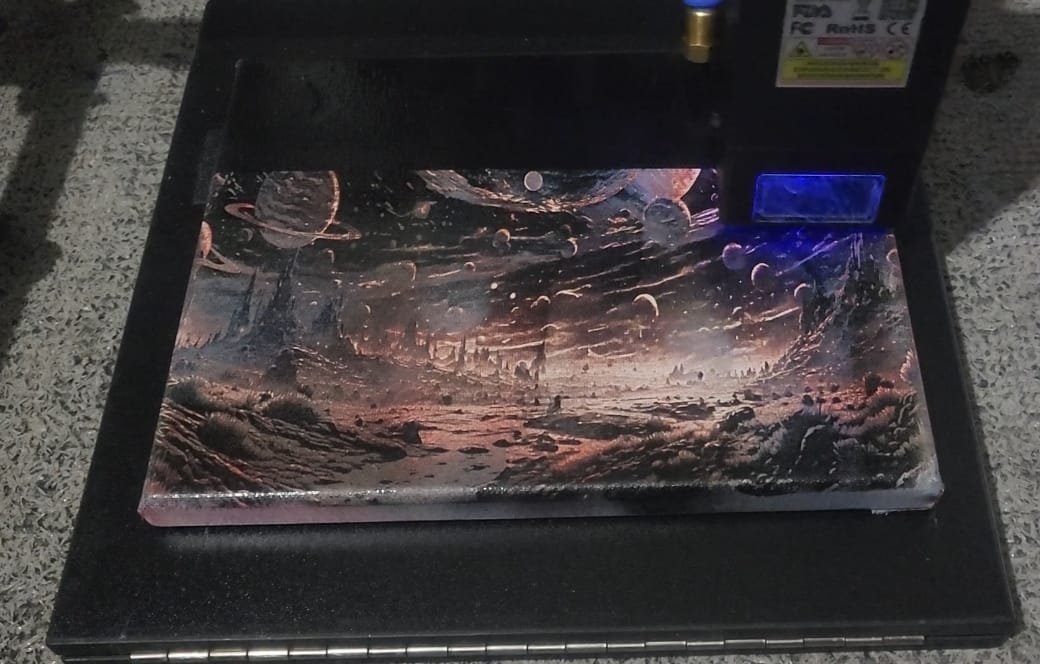Laser Engraving Terms

General Terms In Laser Engraving
Welcome to EngravingThat.com! I'm Kevin Pommells and I'm passionate about laser engraving and excited to guide you through the key terms and concepts of this amazing craft. Whether you're new to laser engraving like I was or looking to refine your knowledge, this introduction will help you understand the basic terms used in this field.
General
- Laser: This is a device that is used to generate a concentrated beam of light, which is used in engraving or cutting different materials. I currently own a Longer Ray 5 20 Watt Laser engraver.
- Engraving: This is the process of marking or etching a design onto a material by removing some of its top layer.
- Cutting: this is the process of using a laser to slice through a material completely. Many people are starting to use lasers in their hobbies as a means of creating more precise cuts.
- Marking: This is the process of creating a visible mark on a material without removing any of its top layer. This is often done by using oxidation or color change.
- Rastering: This engraving term is the method where a laser engraver moves in a left-right motion (like a regular printer). This is done to engrave a graphic or image.
- Vectoring: This is the engraving method that follows paths along vectors. This method is usually used for cutting or outlining certain designs.
- G-code: This is the type of programming language that is used to control CNC machines, including laser engravers.
- Toolpath: Think of this as the path that the laser will follow during the engraving or cutting process.
Laser-specific Terms:
- CO₂ Laser: This is a type of gas laser commonly used in engraving, suitable for organic materials like wood, leather, and acrylic.
- Fiber Laser: This is a laser that is usually used for marking metals and some plastics. This is also usually an expensive type of laser.
- Diode Laser: This is a lower-power laser often used for smaller engravings, mainly for hobbyists or small businesses. I currently own one of these type of lasers.
- Pulse Frequency: This is the number of laser pulses per second. It is important for marking metals and fine detail work.
- Laser Wattage: This is the power output of the laser, measured in watts. This affects the material thickness and types of material it can engrave or cut. I own a 20 watt laser that is mainly suitable for cutting and engraving certain types of wood and plastics.
- Focus Lens: The part of the laser engraving machine that focuses the laser beam to a fine point for precision cutting or engraving. Some lasers are within 0.003 to 0.007 inches according to xxxxx while some can be smaller than 0.001 inches according to jtvmfg.com
- Beam Width: The diameter of the laser beam, affecting the resolution and accuracy of the engraving.
- Engraving Speed: The speed at which the laser head moves while engraving, usually measured in millimeters per second (mm/s).
- Power Percentage: The proportion of the laser’s full power used during engraving or cutting.
Material-related Terms:
- Substrate: The material being engraved or cut (e.g., wood, metal, acrylic).
- Burn Depth: How deeply the laser engraves into the material.
- Kerf: The width of material removed by the laser during cutting, important for fitting pieces together.
- Ablation: The process of removing material through evaporation or vaporization with the laser.
- Masking: A protective layer applied to the material to prevent burn marks or to create cleaner edges during engraving.
Image & Design Terms:
- DPI (Dots per Inch): The resolution of the engraving, referring to the number of dots the laser can place in an inch of space. Higher DPI results in finer detail.
- Vector Image: This is a type of graphic that is composed of paths or lines and is ideal for laser cutting.
- Raster Image: This is a graphic that is made up of many pixels. This is better suited for engraving detailed images or photos.
- Greyscale Engraving: This is the engraving technique where varying power levels are used to create different shades and depths on your material. Think of greyscale as images or engravings in black and white.
Safety and Maintenance:
- Exhaust System: This is the ventilation system that removes smoke and fumes generated during the engraving process. The fumes and smoke that comes from engraving can be poisonous and should never be inhaled.
- Air Assist: This is a feature that blows air onto the engraving surface to remove debris and reduce burn marks or flames. You will notice a better looking piece of work whenever you use air assist.
- Focal Length: This is the best distance between the laser’s focus lens and the material for precise engraving or cutting. Some machines have different focal lengths and these distances can affect the quality outcome you have.
These terms are some of the main ones used in the engraving scene. If you have anymore that I might have missed, please send them over and I will add them as needed.
Related Articles
-
How to Laser Engrave Leather | Step-By-Step Guide
Can You Laser Engrave Leather?
How to Laser Engrave White Tiles Painted Black?
What Is The Best Low Cost Laser Engraver? My Opinion
How to Laser Engrave Acrylic with a Diode Laser: A Step-by-Step Guide
My Hands-On Review of the Monport 6-Watt Diode Laser Engraver
Laser Etching Glass
Laser Engraving A Photo | Full Guide
How Much Does Laser Engraving Cost
Is Laser Engraving Hard to Learn?
Why is laser engraving so expensive?
WHAT IS A LASER CUTTING MACHINE?
Top 7 Laser Engraving Business Ideas
10 Essential Safety Precautions for Home Laser Engraving Projects
Laser Engraving Cutting Boards | How To
Where To Buy Laser Cutting Materials?
Laser Engraving QR Codes
What Is DPI In Laser Engraving
How Much Is A Laser Engraving Machine